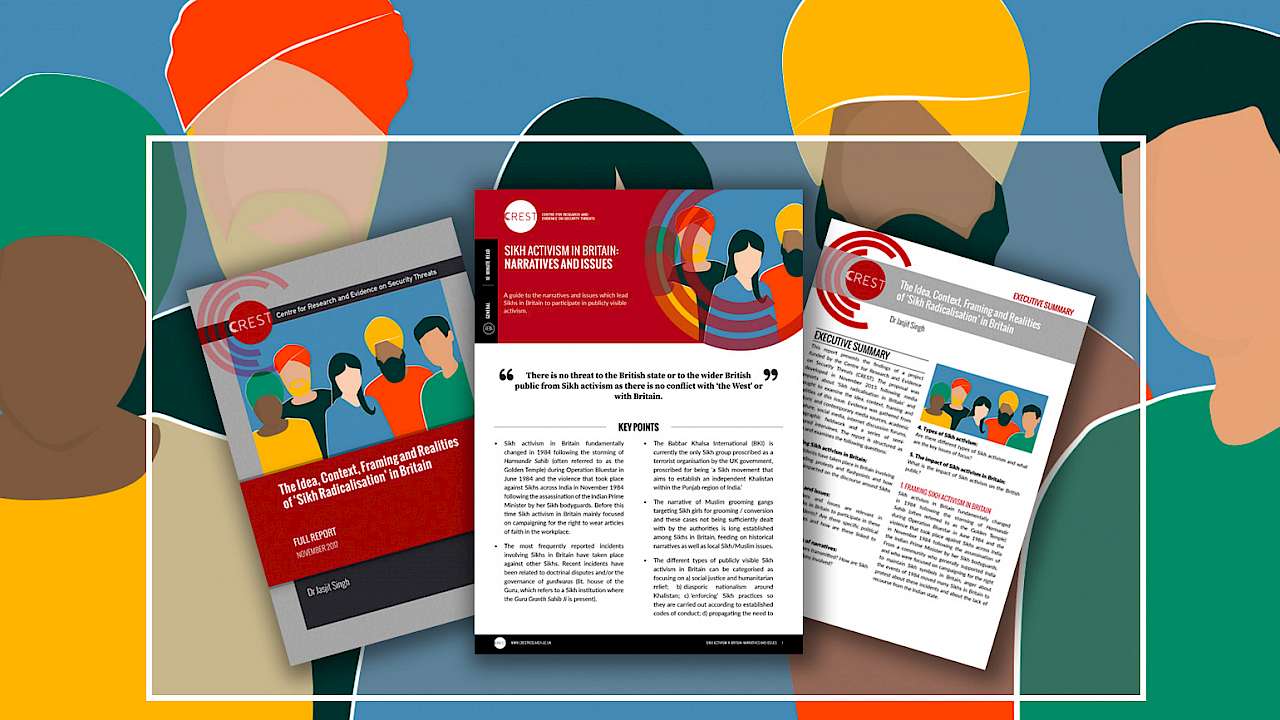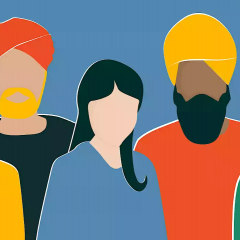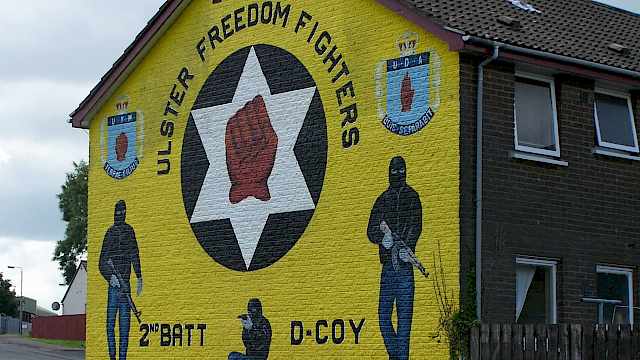In November 2015 the Indian Prime Minister Narendra Modi visited the UK. According to Indian media, during this visit he presented a dossier on ‘Sikh radicalisation in Britain’ to his counterpart David Cameron, which included information on Sikh groups in the UK trying to revive the movement for a separate Sikh state (Khalistan), providing training on how to make explosive devices (IEDs) and funding hate-propaganda against India. Despite these Indian media reports, the British government publicly denied ever receiving this dossier when formally asked in Parliament.
Recent years have also seen a number of incidents involving Sikhs in Britain, including mobilisations around mixed-faith weddings in gurdwaras (literally ‘house of the Guru’, refers to a Sikh institution where the Guru Granth Sahib Ji is present) and campaigns against the serving of alcohol and meat in halls linked to gurdwaras. There have also been reports in UK media about Sikh/Muslim tensions and links between Sikhs and the far right.
In response to these incidents and reports, I led a research project to examine the idea, context, framing, and realities of Sikh radicalisation in Britain. I gathered evidence from historic and contemporary media sources, academic literature, social media, internet discussion forums, ethnographic fieldwork, and a series of semi-structured interviews.
Two events in 1984 fundamentally changed Sikh activism in Britain: The storming of Harmandir Sahib (often referred to as the Golden Temple) during Operation Bluestar in June 1984 and the violence that took place against Sikhs across India in November 1984, following the assassination of the Indian Prime Minister by her Sikh bodyguards. Before these events, Sikhs in Britain generally supported India and were mainly focused on campaigning for the right to maintain Sikh symbols in Britain. However, anger about Operation Bluestar remains an issue which continues to move Sikhs in Britain to protest (against India) about this incident.
Anger about Operation Bluestar remains an issue which continues to move Sikhs in Britain to protest (against India) about this incident
For Sikhs, ‘1984’ can refer to the events of either June and/or November with activism around 1984 not automatically indicating support for the idea of Khalistan. Although 1984 remains the main political driver to activism, there are also a number of religious and cultural narratives which also lead to Sikh activism, including instances of beadbi (disrespect) being shown to the Guru Granth Sahib Ji (regarded by Sikhs as the eternal living Guru, in the form of a book), the need to maintain the izzat (honour) of the Sikh community and the wish to uphold edicts issued from the seat of Sikh temporal authority (the Akal Takht).
Another prevalent narrative is that of Muslim grooming gangs targeting Sikh girls for grooming/conversion and these cases not being sufficiently dealt with by the authorities. This narrative often feeds on existing historical narratives and more contemporary Sikh/Muslim tensions and has led some Sikhs to engage with far-right representatives and organisations.
Having mapped the various events that have taken place in Britain involving Sikhs, I found that the most frequently reported incidents of violence involving Sikhs have occurred against other Sikhs. In the immediate aftermath of 1984, some incidents of fatal political violence were committed in Britain by Sikhs supporting Khalistan, against Sikhs opposing it.
In the current context, many of the ‘Sikh on Sikh’ issues are a consequence of a) the contested nature of religious authority within the Sikh tradition and/or b) local factional politics which most often relate to personal and familial disputes. Indeed, local context plays an important role in Sikh activism. The Midlands has the highest concentration of Sikh organisations and gurdwaras which impacts on the number of activities, networks, incidents and opportunities to mobilise in this region.
Narratives which lead to activism are transmitted in different ways, through families, organised events, lectures, camps, music and Sikh media
Narratives which lead to activism are transmitted in different ways, through families, organised events, lectures, camps, music and Sikh media (newspaper, broadcast, online and social media). As there are few places and spaces within the British education system for Sikhs in Britain to examine their heritage and history, many undertake such engagement and learning on an ad hoc basis, primarily online.
I categorise the different types of publicly visible Sikh activism in Britain as focusing on a) social justice and humanitarian relief (e.g. seeking justice for 1984, providing aid/food relief), b) diasporic nationalism around Khalistan, c) ‘enforcing’ Sikh practices so they are carried out according to established codes of conduct and/or Akal Takht decrees, d) ‘defending/policing’ the Sikh community against a variety of perceived ‘external threats’ and e) personal/factional disputes.
I also found that although Sikh women regularly participate in Sikh activist rallies and protests, they are underrepresented in Sikh organisations. A number of female Sikh activists, in particular, are highlighting the fact that issues including gender inequality, sexual abuse, domestic violence and substance abuse (drugs, alcohol) have not been sufficiently addressed by Sikh organisations and institutions.
I found no threat to the British state or to the wider British public from Sikh activism as there is no conflict with ‘the West’ or with Britain. Although the January 2014 revelations that the British government advised the Indian government in their planning for Operation Bluestar may have changed how some Sikhs view Britain, there has been no targeting of British state officials following these revelations. The focus remains on agitating for the release of relevant historical documents through political processes.
The Indian media regularly report on links between Khalistani organisations in India and Sikh individuals in Britain. However, although most of these reports highlight funding links, the details about these links are unclear and require further research. Sikhs in Britain do certainly appear to be influencing Sikh doctrine and practice worldwide, particularly through campaigns focusing on ‘religious enforcement’, which have led to specific Akal Takht edicts in response.
In conclusion, the main threat to community relations in Britain is from individual or group vigilantism resulting from internal Sikh issues/disputes or from the exploitation of local intra- and inter-community tensions. Much Sikh activism in Britain actually contributes positively to the integration agenda, particularly in the form of humanitarian relief provided during natural disasters (e.g. the floods in Somerset and Hebden Bridge) and incidents (e.g. Grenfell Tower) where members of the public require support.
Academic Publications
Racialisation, ‘Religious Violence’ and Radicalisation: The Persistence of Narratives of ‘Sikh Extremism
Recent years have seen concerns raised in media and by policymakers about rising levels of ‘Sikh extremism’ and ‘Sikh radicalisation’ in Western Sikh diasporas.
In this article I analyse why these concerns persist, particularly given the general non-violent nature of ‘Sikh militancy’ (Wallace . “Sikh Militancy and Non-Violence.” In Sikhism In Global Context, edited by Pashaura Singh, 122–144. Oxford University Press) and the relatively few incidents of terrorism beyond those which took place during the height of Sikh militancy in the 1980s.
I argue that these concerns are a consequence of an underlying ‘anxiety about anti-assimilationist religious others’ impacted by (a) the racialisation of religious minorities which began in the colonial period, (b) a specific type of ‘Indian secularism’ which frames Indian legislation and media reporting and (c) the post 9/11 securitisation and increased surveillance of Sikh bodies as part of the ‘War on Terror’ with its concerns about ‘religious violence’ and the necessity of the secular nation state to ensure that any such violence is suitably policed.
This article will be of interest to those examining the racialisation and representations of religious minorities in Western liberal democracies and the impact of securitisation policies on these communities.
(From the journal abstract)
Jasjit Singh, 2019. Racialisation, ‘religious violence’ and radicalisation: the persistence of narratives of ‘Sikh extremism’. Journal of Ethnic and Migration Studies. https://doi.org/10.1080/1369183X.2019.1623018
Copyright Information
As part of CREST’s commitment to open access research, this text is available under a Creative Commons BY-NC-SA 4.0 licence. Please refer to our Copyright page for full details.
IMAGE CREDITS: Copyright ©2024 R. Stevens / CREST (CC BY-SA 4.0)








